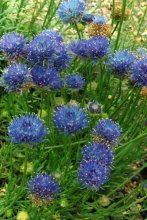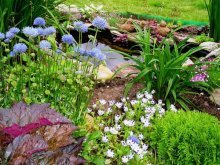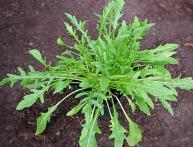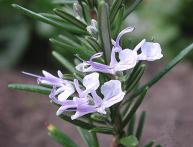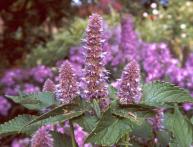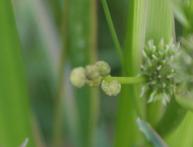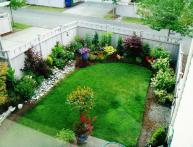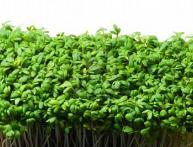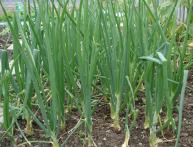Cultivation and use of beetle
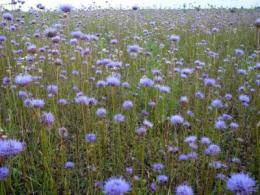
Nature has endowed us with many gifts that we have been using since ancient times. We are treated, build houses, sew clothes and decorate our homes, completely unaware that all this exists thanks to the green treasures of this world. Beetleweed can also be classified as one of these plants. Inconspicuous at first glance, but very useful, it has helped our ancestors for thousands of years. And today this plant can surprise us and bring great benefits.
Content:
Description of the bug
Bukashnik is annual plant, but cases are known in the scientific community, and there are also descriptions indicating the presence of specimens with a two-year and multi-year growth cycle. The stem has a woody structure in the lower part, the rest of the area is smooth. Beetle leaves have different shapes, which depend on the particular variety. The edges of the leaves are serrated.
The flowers of this plant are very small in size. They are collected in inflorescences consisting of a huge number of flowers, the number of which can reach three hundred. The calyx is divided into five petals, among which there are five stamens, fused at the base of the calyx.
The beetle has fruits that are shaped like a box containing many ovoid seeds. After falling out, they begin to germinate within a few days.After the growth cycle, the plant begins to grow and bloom until new pods with new seeds open. After the dawn period, the plant dies.
Known varieties

In number most famous species The bukashnik includes the following representatives:
- Perennial beetle
- Curly beetle
- Mountain beetle
- Heldreich's Bug
- Smooth bukushnik
The very name of the bug species suggests that it is capable of growing and spreading over several years. The perennial beetle is a plant up to forty centimeters long in a spherical clump. The roots are weak and shallow. The leaves at the base of the plant are collected in bunches. The upper part is represented by a blue flower, next to which there are no leaves in the upper part. The foliage itself is covered with villi.
Curly beetle is herbaceous plant, having a small size (up to thirty centimeters). The stems are sparsely branched, inclined toward the top, or erect. The foliage is collected in a bunch at the bottom of the plant. The leaves are ovoid in shape with jagged edges and drooping towards the bottom.
The flowers are collected in inflorescences up to three centimeters in diameter. the calyx of the flower may have a lilac or blue tint. The corolla is blue or light lilac. And the fruit looks like a green box with a lot of seeds.
The mountain beetle is close to a perennial species in its growth cycle, but its lifespan is two years. Its habitat is the highlands of Europe. The root system of this species is more complex and powerful than previous representatives. The stems of the mountain beetle are up to forty centimeters and stretch to the top or are straight.The inflorescences are arranged in such a way that the leaves are located distant from the flowers.
The leaves are up to three centimeters long and arranged linearly in relation to the stem. The surface of the leaf is covered with corollas. Flowering occurs from early summer to early autumn. The fruits ripen at the end of July.
The Heldreich plant is a mixed type, which has the external and qualitative characteristics of both annual and perennial representatives of the species. This is a herbaceous plant, erect.
Smooth bug is the result of cultivation of this plant. Among other representatives, it is most often used by humans for domestic purposes. In appearance and its qualities it does not differ from other species, but is less demanding for cultivation in various conditions.
Cultivation and use of beetle
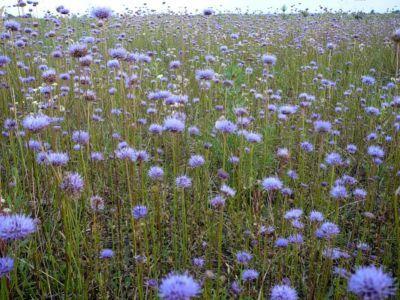
Growing beetroot is not a difficult process if the smooth species is used as planting material. The following conditions are sufficient:
- Sandy soil
- Availability of drainage
- Open space
- Frost protection
- No dampness
In most cases, beetroot is used as a decorative tool in landscape design. Group plantings are done around the house next to the planted lawn to provide some contrast. Geraniums, daisies and yarrow are also planted next to it. In addition to courtyard design, beetroot is also used in floristry to create beautiful bouquets.
Except design purposes Bukashnik is actively used by representatives of traditional medicine as a medicine. To do this, collect flowers, foliage and stems of this plant.Bukashnik is used as a diuretic and hemostatic agent, and decoctions based on Bukashnik are recommended for the treatment of female diseases, diseases of the gastrointestinal tract, insomnia and neurological disorders.
You cannot underestimate the power of plants and pass by every representative of the green world. Bukashnik is of considerable value along with other famous plants. Therefore, it is worth remembering that it must be used wisely. Natural remedies are much more effective and healthier than artificial ones, and also do not cause a negative effect when actively used.
Interesting video about the mountain bug:
Interesting information about the vegetable garden

